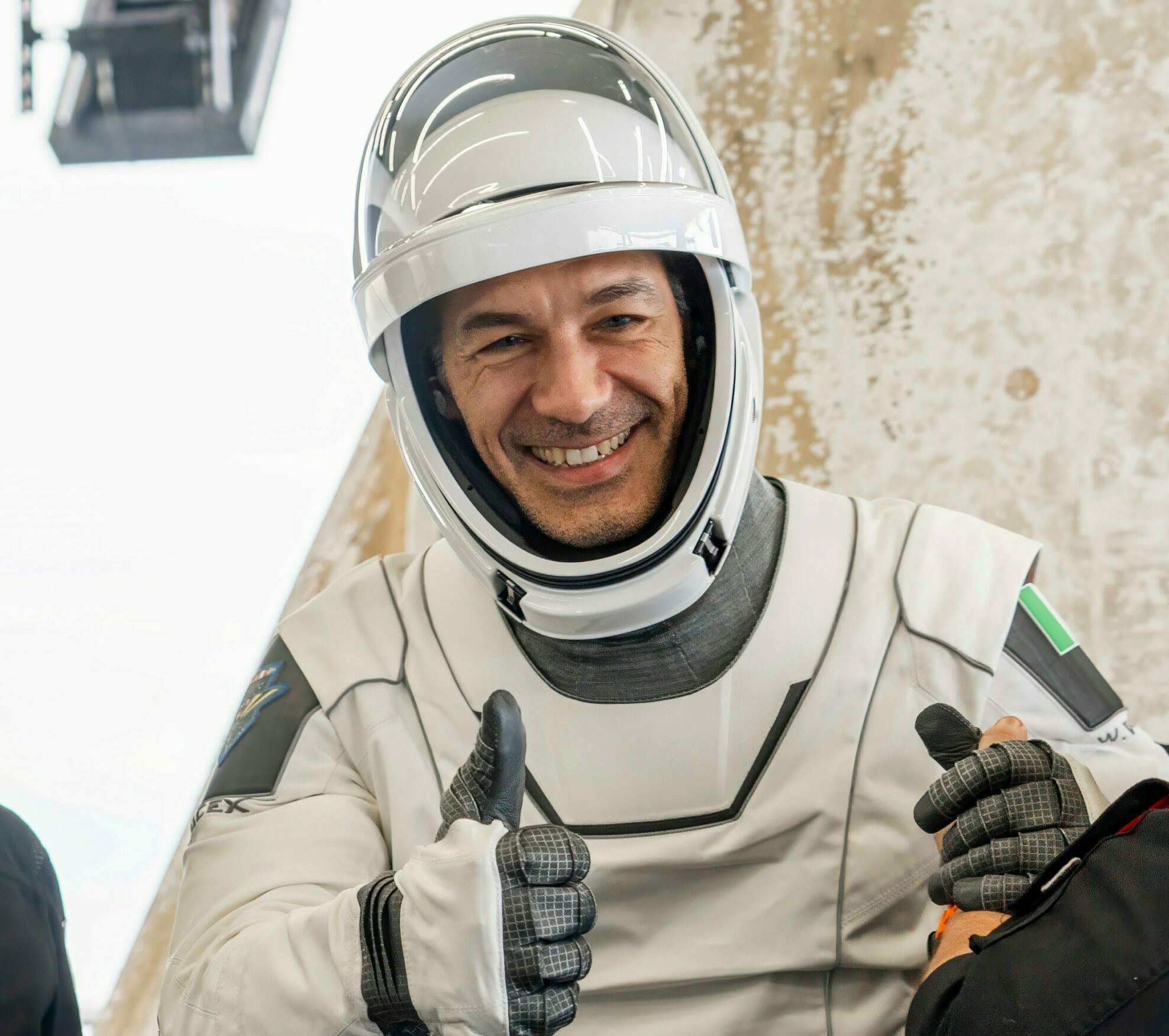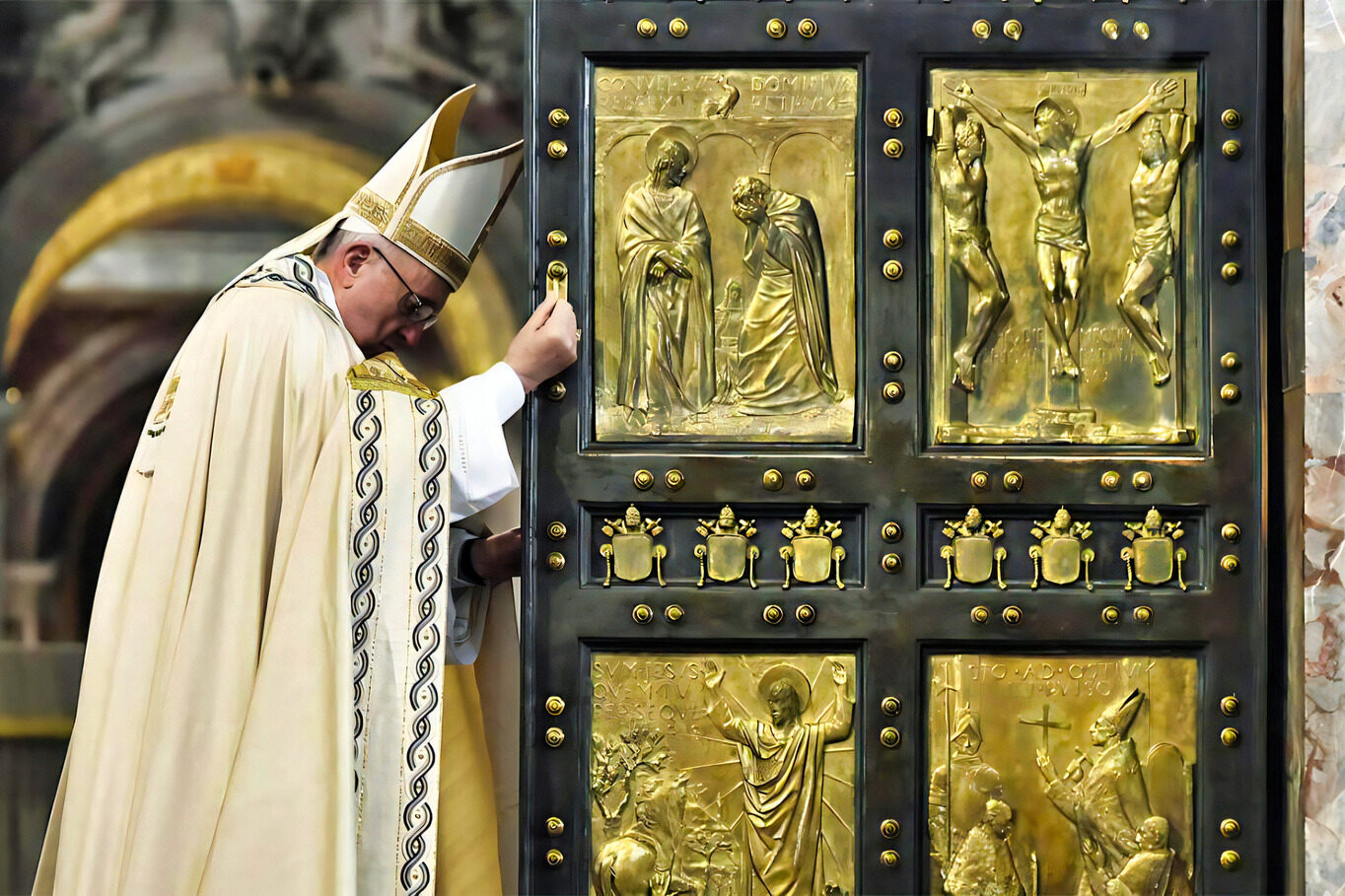The sun dips below the horizon, and a shroud of darkness blankets the Earth. This transition brings a dazzling burst of light that overwhelms the horizon, forcing onlookers to avert their eyes. Above the clouds, storms rage differently, with lightning forking upwards in ultraviolet radiance and electric bursts streaking across thousands of kilometers. At night, the glow from human settlements outlines the contours of our planet, marking the divide between densely populated urban areas, the vast blue oceans, and less affluent countries.
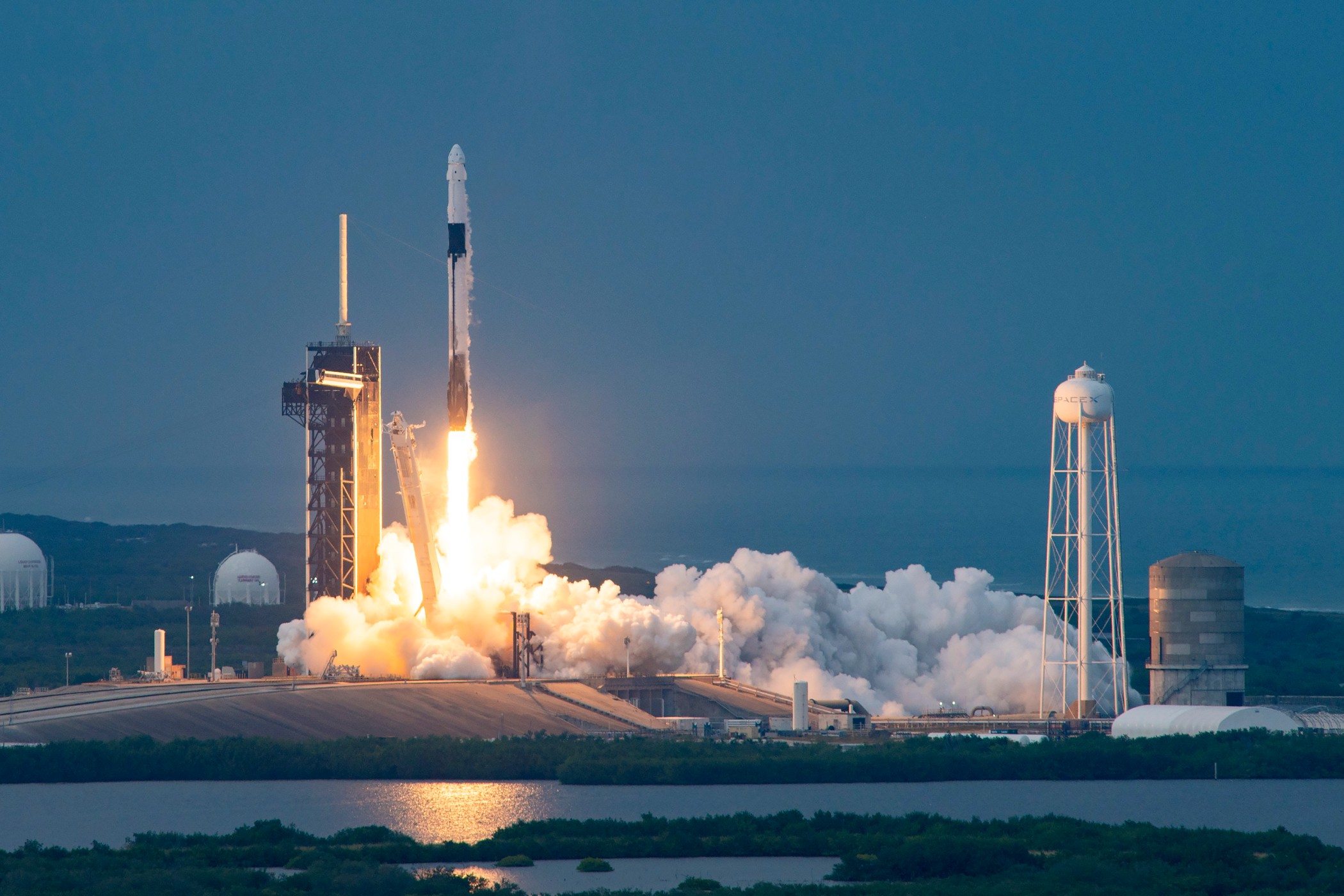
Speaking to L’Italo-Americano, Roman astronaut Walter Villadei, who will celebrate his 50th birthday on April 29, described viewing Earth from space as an overwhelmingly profound experience. He highlighted the special emotion of seeing Italy from above, appreciating its extraordinary contributions and pivotal role in the history of space exploration.
Recently back from the Axiom-3 Voluntas mission aboard the ISS, which he reached after a 37-hour journey on SpaceX’s Dragon, Villadei recounted his experiences at the Università di Bari, starting with the January 18 launch from NASA’s Kennedy Space Center at Cape Canaveral, all the way to his return near Daytona, Florida, on February 9.
He expressed particular pride in bringing the Italian flag back to the International Space Station, a moment of great significance and emotion for him.
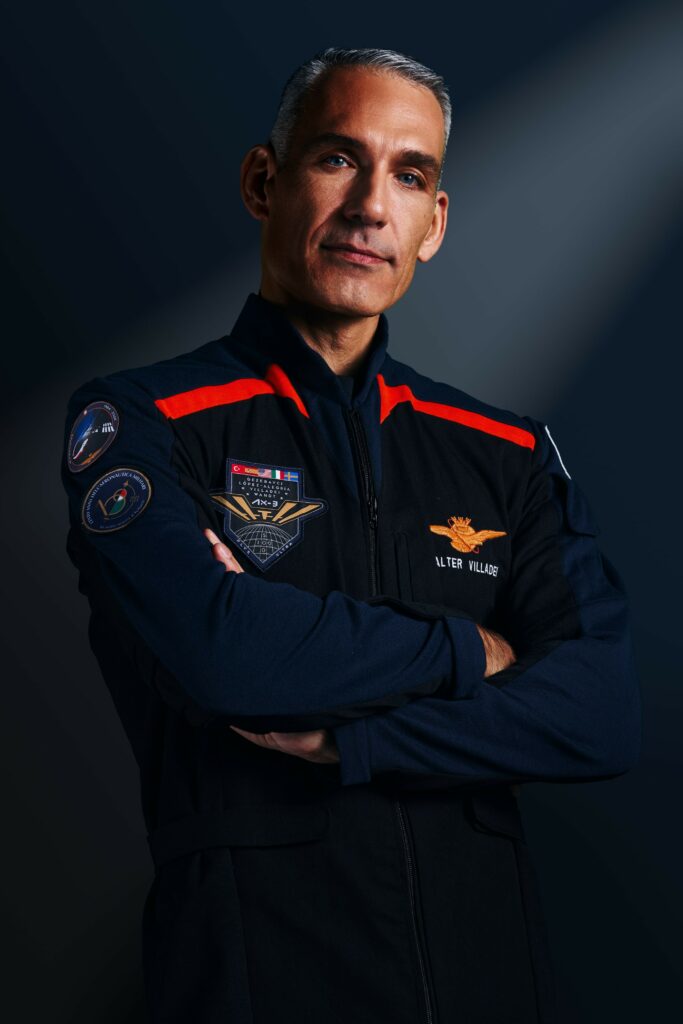
What lasting impression does this space mission leave with you?
I’m bound to fall short on this “mission:” capturing the essence of certain emotions and the breathtaking views offered by space, which is both a unique and extraordinary experience, is profoundly challenging.”
He’s the eighth Italian astronaut in orbit, the fifth from the Air Force, to which he expresses gratitude for its ability to “keep the goal in sight, however distant,” enabling him to experience space. He began his training in 2011, at a time when commercial flights weren’t even discussed. Yet, it was he who, with the Virtute 1 crew, inaugurated the first private suborbital flight last June on Virgin Galactic’s spaceplane and, within a few months, participated in the third mission of Axiom Space, the American aerospace company aspiring to manage the world’s first commercial space station.
Perseverance is exactly the message he conveys to the younger generation and to the students he encountered in Bari, the capital of Apulia, home to the Command of the Air Force Schools: “My journey spanned a decade of training, beginning as a cosmonaut in Russia and then moving on to the United States, where the space economy was taking off with the entry of private enterprises and industries. Success might not arrive instantly or on the schedule one anticipates, yet it’s the steadfastness and resolve that truly make a difference. My advice to them is not to lose heart in the face of possible setbacks but to steadfastly chase after your ambitions.”
From the cupola of the ISS, an Italian technological marvel, come his most cherished impressions, yet the journey obviously begins much earlier, aboard the rocket. “The cupola is a special place, the ‘terrace’ of the ISS, akin to the Sistine Chapel of the Station, but it’s also a critically important engineering feat that allows for a 360-degree view. Looking out from there and observing Earth is an extraordinary experience. It’s significant to mention that it was crafted by the Italian industry, a unique piece that Axiom is also considering for the new station, even with larger dimensions.”
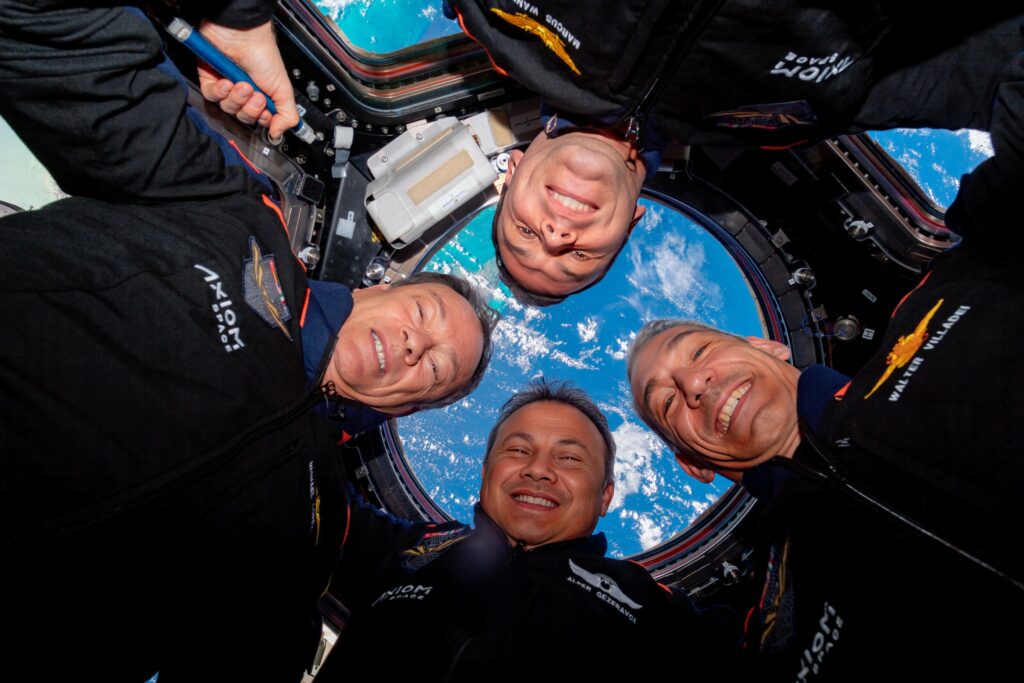
What happens when you’re positioned in a spacecraft, poised for launch?
The initial wave of excitement hits at take off. Astronauts board the capsule two and a half hours early, embarking on a sequence of checks and preparations. Then, the countdown commences, ‘three, two…’ and right between one and zero, the whole vehicle starts to shake. The engines roar to life, and there’s this brief instant where it feels like nothing’s happening. ‘Are we not moving? What’s going on?’ This moment is fleeting, as the rocket’s thrust battles against gravity’s hold, giving you a brief sensation of stillness before a steady climb to 3.2 Gs in the first stage. That’s when the unexpected happens: the engines shut down, yet you feel as though you’re still in motion. Your brain is deceived by the shift from accelerating to decelerating, creating the illusion of descent while you’re actually ascending further. Shortly after, 14-25 seconds in, the second stage fires, propelling you upward with increasing force up to 4.7 Gs until the engines cease, and suddenly, you’re floating in microgravity.”
Describing the “longest brief mission” (intended to be 14 days but stretched to 21) is undeniably captivating. The docking phase, when the ISS, orbiting higher and slower, and the spacecraft, racing from below at higher speed, must align perfectly. The orbital mechanics necessitate a day and a half for proper alignment. Amidst the cosmic night, with Earth below, the journey takes you through a field of rocky debris, satellites, and space trash. “Watching the ISS draw near, the silence is remarkable. You expect mechanical sounds, the clanking of locks engaging, but there’s nothing. After a brief pause for pressure equalization between Dragon and the ISS, the hatchway opens, leading to the customary welcome ceremony.”
With eyes as blue as his flight suit, which proudly sports a gleaming Italian flag on the left arm, Villadei generously described the incredible voyage that took him to the laboratory 400 kilometers above Earth. His narrative spanned the extensive preparation and his experiences in space, conducting experiments and following rigorous procedures, all as part of a mission that marked Italy’s participation, coordinated for the first time by the Air Force.
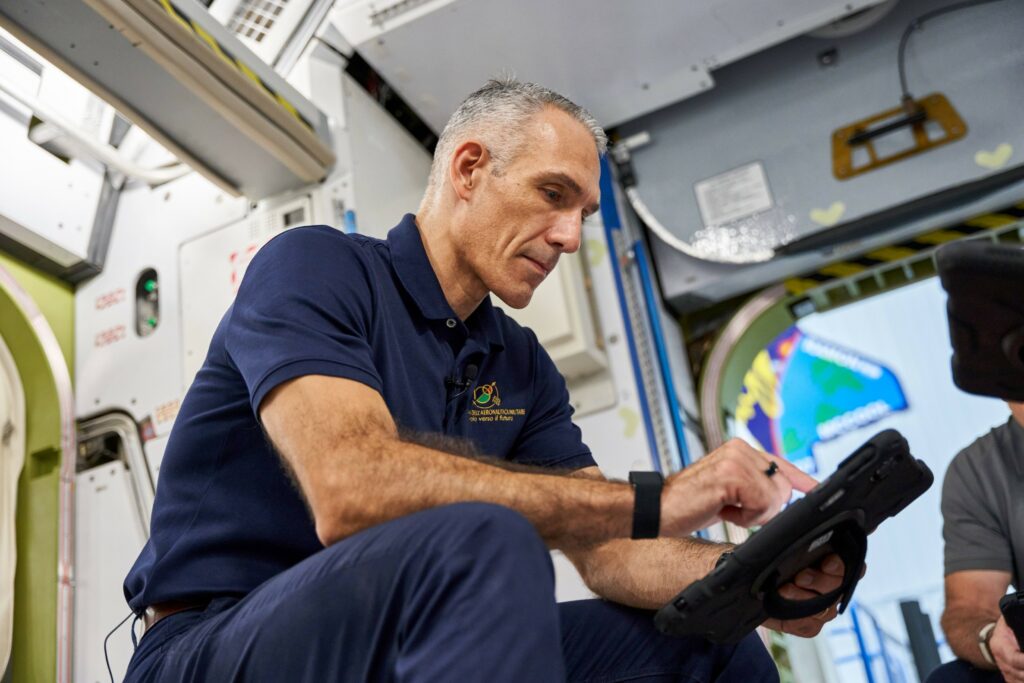
How did this mission come about?
It originated from a vision of the Air Force which, last year, celebrated its 100th anniversary and has always seen space as a dimension to project into. This vision expanded to represent a national effort, uniting the Italian Space Agency with fields of science, academia, industry, and governance. This collaborative model has even begun to pique international interest.
Italy’s pivotal role stretches back decades…
This year marks the 60th anniversary of the San Marco satellite’s orbit, Italy’s pioneering venture into artificial satellites. Thanks to the Air Force and General Broglio, Italy was the third nation to achieve this feat. The initiative took root in Apulia, home to an Air Force base instrumental in the early satellite launches of 1964. Today, Apulia leads in space investment, treating it as a key strategic sector brimming with potential. Italy remains at the forefront, integrating scientific, industrial, and academic expertise to maintain its influential role. Cultivating synergies and engaging the younger generation and businesses remains our strategy for international prominence.
But from that vantage point, what does Italy look like? On his flight, hurtling at 28,000 km/h, experiencing rapid cycles of dawn and dusk every 45 minutes, and orbiting Earth 16 times a day, the Italian astronaut managed to connect with his family in Rome at the end of every day. From space, the Italian peninsula unfolded as “a breathtakingly extraordinary spectacle. During one of the initial nights aboard the ISS, we traced a path directly over the Alps and down the spine of the Apennines, in just 7 minutes: the cities of Milan, Florence, Rome, Naples, Calabria, and Sicily were illuminated. Imagine,” he told us, “the sea’s dark expanse at night, with Italy ablaze in light. The slender, elongated Boot surrounded entirely by the sea.”

Attention on board is always at its peak, yet it’s impossible not to be moved. “The most astounding thing for me is the transition from night to day and vice versa. As the sun dips below the horizon, a veil of dark gray, then black, gradually spreads over the Earth. From the still-lit ISS, you can see the thin blue line of the atmosphere, this layer of gas that envelops our planet. Then, the ISS too enters darkness, and from the cupola, a new geography of lights unfolds: Africa is almost entirely dark, Europe mostly lit. After 45 minutes, darkness gives way to light: there’s just enough time to witness the line change from blue to slightly phosphorescent, then to yellow-green, followed by orange-red-purple. The sun peeks out, and in that instant, it’s like being hit by a tsunami. It takes just 2 seconds from the first rays appearing on the horizon to the point where the sun becomes too bright to observe, the perception of colors completely enveloping you, forcing you to look away because the light doesn’t even pass through the filter of the atmosphere.”
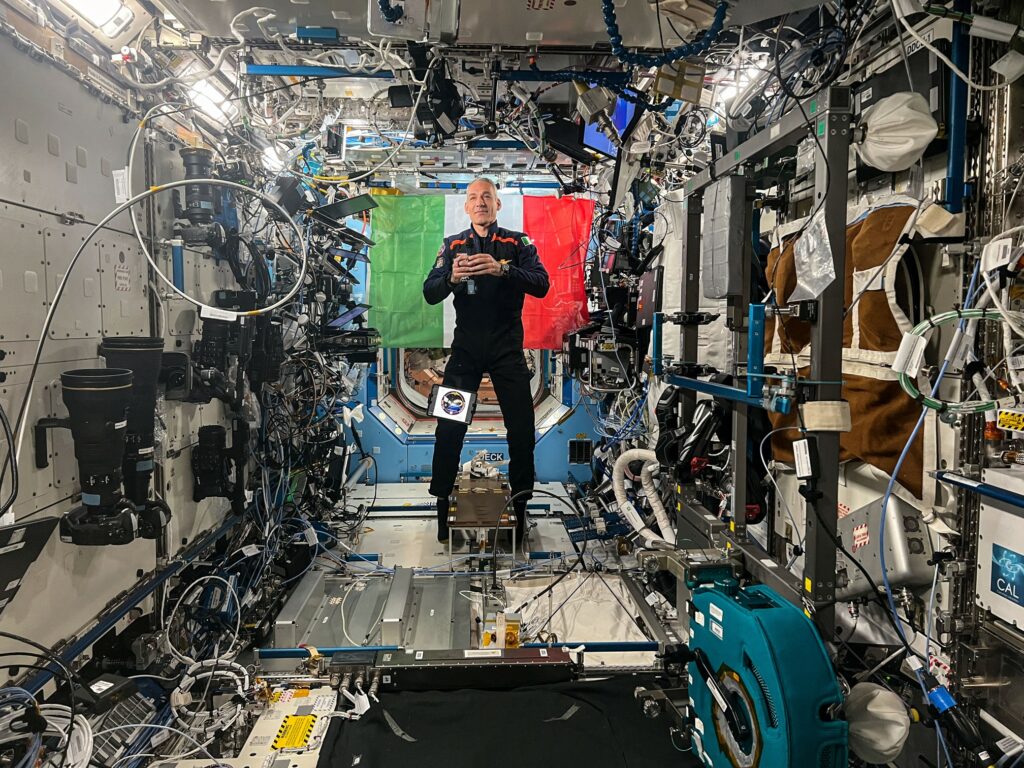
Villadei, always punctual, smiling, and focused, then spoke about the activities on board, the numerous experiments proposed by both the scientific and industrial communities, as well as the Ministry of Defense and ASI, the national space agency. From tests on the beta-amyloid protein, offering insights into treatments for neurodegenerative diseases like Alzheimer’s or Parkinson’s, to studies on female fertility under zero-gravity conditions, to monitoring space hazards to prevent collisions with orbiting systems. “On Earth, one might imagine space as vast and empty, yet it’s becoming increasingly crowded. Whether looking from the Dragon or on the ISS, you continuously see satellites passing nearby. For the Air Force, I conducted an experiment simulating a connection from the ISS to the Experimental Flight Department in Pratica di Mare to assess the risk levels of space debris approaching the Station. Seven days later, it almost happened: NASA warned us that within 48 hours, we could have a close approach with debris, thus we prepared for an emergency procedure. It didn’t happen, but the concept of ‘situation awareness’ is a real necessity because we onboard don’t know what’s around us; this information is relayed by ground command and control centers.”
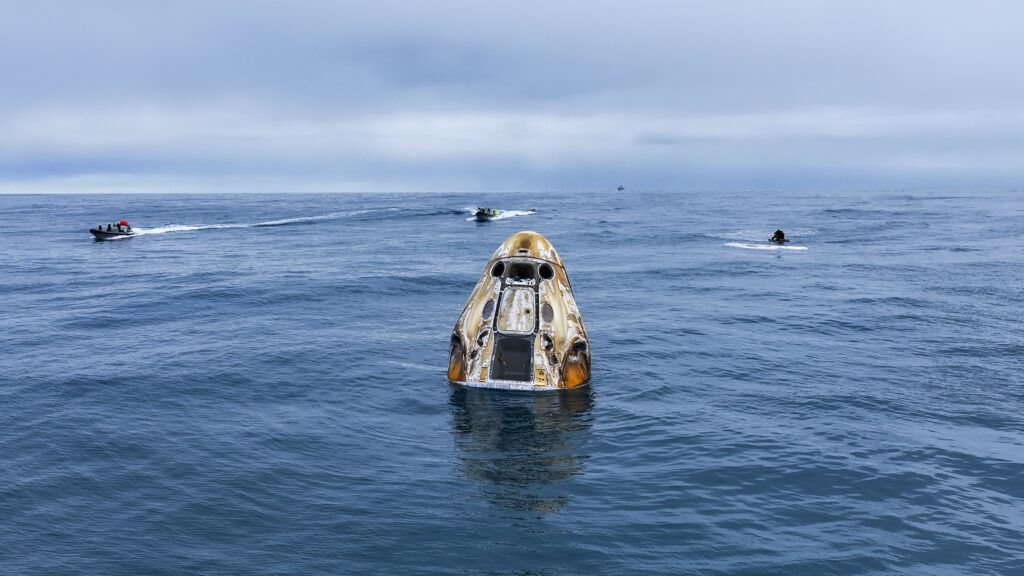
Space applications are already a part of our lives, and discussing experiments and technologies is really about getting to the heart of space missions. “This research serves multiple purposes. The primary goal is that research in space aims to enhance life on Earth. Secondly, scientific progress doesn’t happen in quantum leaps, and you don’t win a Nobel Prize with a single experiment: research is a lengthy journey that requires perseverance and depth. Thirdly, as our missions extend from the 400 kilometers of the ISS to the Moon’s 400,000 kilometers or Mars’s 85 million kilometers, the knowledge we gain today will be vital for safeguarding astronauts, who will find themselves much further than a mere 12 minutes and 40 seconds from Earth.”
There’s a pressing need to innovate beyond the “old” ISS, a product of the 80s and 90s, a fusion of Russian and American technologies, and Italian and Japanese modules, now replete with obsolete standards and systems. In such an environment, staying still or maintaining balance is exceptionally challenging. This underscores the importance of industrial experiments, such as “developing materials that protect against cosmic and solar radiation and the secondary radiation that occurs within the Station, which are the most significant risks to astronauts.” A space suit, for instance, is a concentration of technology, designed to offer both protection and functionality essential for life beyond Earth.
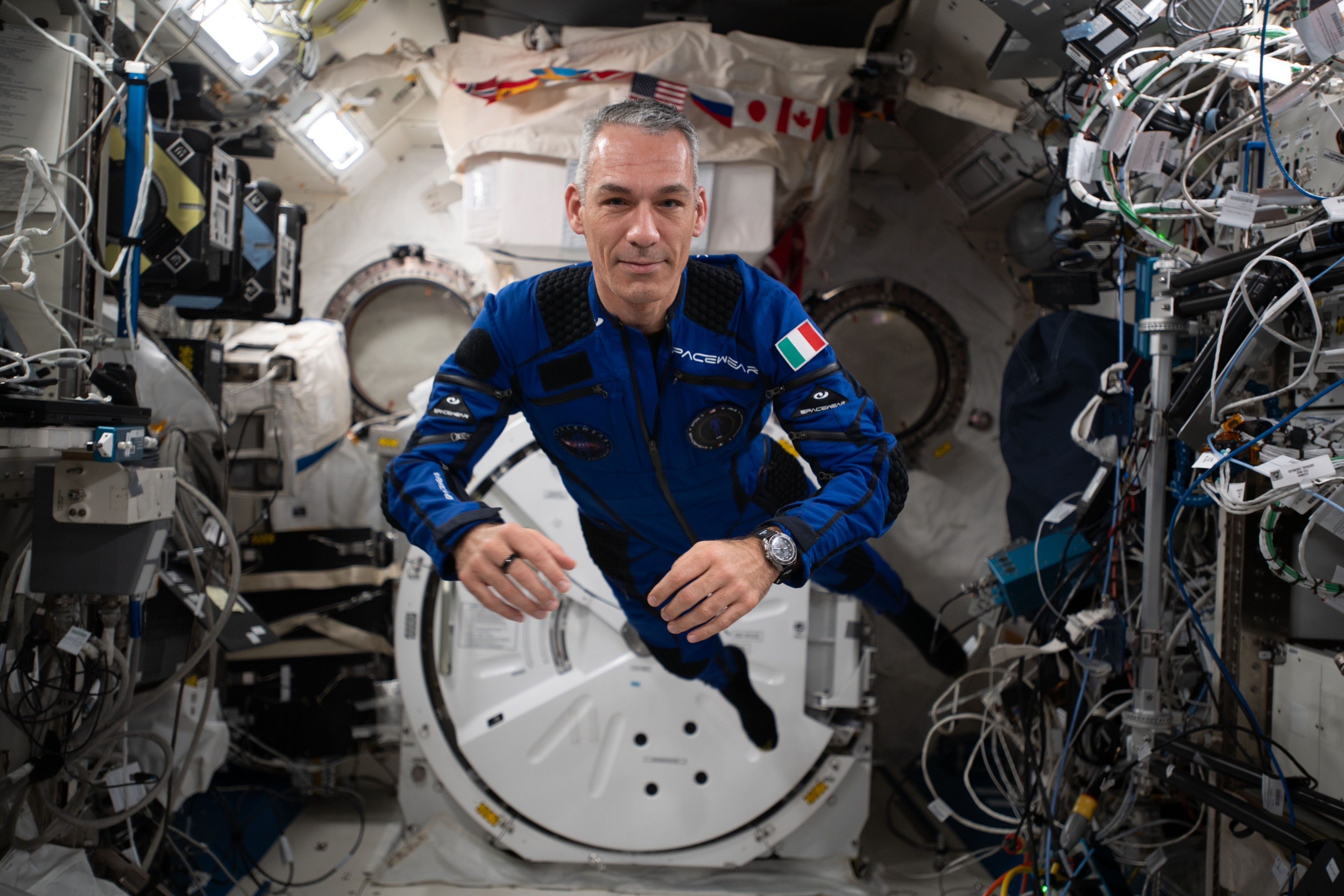
You wore special suits equipped with sensors. What was this experiment about?
I wore the first suit, designed by a startup from Apulia, on the Dragon. Ideally, it allows astronauts to mitigate the impacts of space travel by simulating some physical training, which is the principal strategy for countering bodily deterioration: muscle weakening and bone demineralization. This suit enables exercise through built-in resistance, without the need for active workouts. The second suit, created by a startup in Marche, aims to turn the garment into a smart device, equipped with sensors to track fatigue and provide astronauts with actionable feedback. Integrating innovation and research with the academic and industrial domains proved incredibly enlightening. This synergy can bring exciting developments and has significant potential.”
The astronaut then engaged with questions from students at the University of Bari, followed by a session of autographs and selfies. But what’s his message for the younger generation? “Space,” he explained, “is closer than it seems, offering real professional growth opportunities not just for those dreaming of becoming astronauts but for a wide array of professions. It’s an inherently interdisciplinary field. I discussed with the rector the exciting potential for launching projects that allow students to flourish in this arena, driven by passion, especially as space will be a key focus for us in the decades to come.”
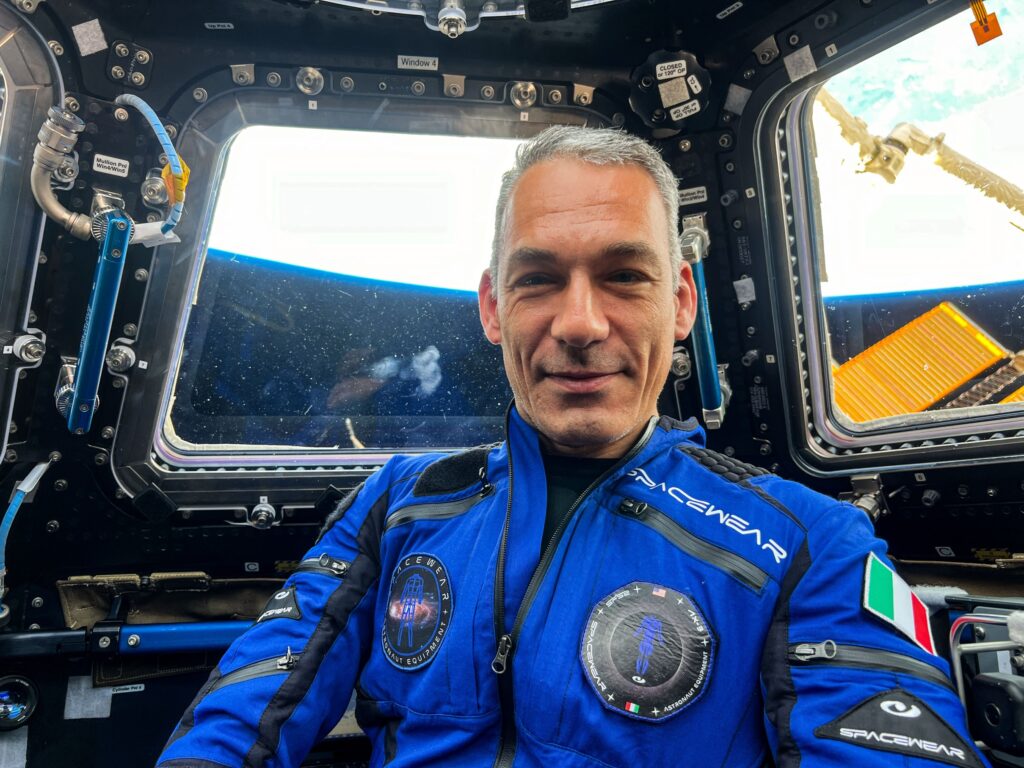
When it comes to returning to the moon, discussions point to 2027, and we’re at a juncture where imagining and then building cislunar stations—those orbiting our moon—is feasible. For Mars, though, the timeline extends to the century’s end, as the requisite technology is still under development. But the scope for research is immense. The suit is a significant example: : “It draws from diverse experiences: automotive, fashion design, engineering. It integrates technology, medical aspects, sensor technology, innovative materials, data analysis. The challenge today,” said the colonel, “is to operate across different fields, and space is conducive to this approach. The suit perfectly illustrates how many different disciplines can come together.”
But the opportunities are numerous. It’s worth mentioning that Villadei also prepared, as an experiment, “a good Italian pasta, cooked al dente.”
